Rollover Mistakes to Avoid: From a Financial Advisor
If you have left a previous job and decided what to do with the money in your old employer’s retirement plan, take a moment to feel proud. Managing these decisions requires careful thought and planning, and it’s an important step in securing your financial future.
If you’re still undecided about the fate of your old 401(k), 403(b), or other workplace plans, don’t stress. Life gets busy, but making an informed decision when you’re ready is key. Typically, you have four main options:
1. Leave the money in your former employer’s plan (if the plan allows).
2. Roll it over into an Individual Retirement Account (IRA).
3. Transfer it into your new employer’s plan (if they accept rollovers).
4. Cash it out.
Some plans may have rules. These rules require small balances to be rolled into an IRA or sent by check. Balances under $1,000 may be sent to you directly. Watch for a 30-day notice from your plan administrator, which gives you time to decide where your money should go.
Rolling Over to an IRA
If you’ve decided to roll your funds into an IRA, it’s time to take action. Begin by contacting your former plan administrator to understand their process and any requirements. You’ll want to ensure a smooth transfer by having the details of your new IRA account ready, including account numbers, wire instructions, and mailing addresses.
Here are four common mistakes to avoid during the rollover process:
Mistake #1: Choosing the wrong IRA
To get the most out of your rollover, it’s critical to select the right type of IRA. If your old plan included pre-tax contributions, a traditional rollover IRA is likely the best fit. However, if you had a Roth 401(k), rolling the funds into a Roth IRA is usually the better choice.
Avoiding this mistake:
● Confirm whether your old account held pre-tax, after-tax, or Roth contributions.
● Open the appropriate IRA for your needs before initiating the rollover.
● Consult your IRA provider for guidance, especially if you had less common after-tax contributions.
Mistake #2: Receiving a check made out to you
The IRS has specific rules about rollovers. If a check is made payable to you, taxes may be withheld, and you could face additional challenges rolling over the full amount.
Avoiding this mistake:
● Request a direct rollover, where the check is made payable to your new IRA provider for your benefit (not to you personally).
● If you receive the check, forward it to your IRA provider immediately. Be mindful of the 60-day window to deposit the funds, or you risk penalties and taxes.
Mistake #3: Losing track of your rollover
Rollovers can get delayed for various reasons, so keeping tabs on the process is essential.
Avoiding this mistake:
● Follow up with both your old plan administrator and your new IRA provider to ensure everything is on track.
● If needed, work with your IRA provider to resolve any issues. They can assist with calls or paperwork to speed up the transfer.
Mistake #4: Forgetting to invest the funds
Unlike 401(k) plans, IRA funds don’t get automatically invested. If you don’t act, your money could sit in cash for years, missing out on potential growth.
Avoiding this mistake:
● Review your retirement strategy and select investments that align with your goals.
● Consider inflation and choose investments with the potential for growth, especially if you’re saving for the long term.
● Seek help from financial professionals if you’re unsure where to start.
Bottom Line
Taking the time to thoughtfully manage your old retirement accounts can make a significant difference in your financial future. Whether you’re rolling into an IRA or leaving funds with a former employer, each decision brings you closer to your retirement goals. Don’t hesitate to seek advice from a financial advisor if you need clarity or support along the way.
Sources:
https://www.fidelity.com/learning-center/personal-finance/401k-rollover-mistakes
Disclosures:
This information is an overview and should not be considered as specific guidance or recommendations for any individual or business.
This material is provided as a courtesy and for educational purposes only.
These are the views of the author, not the named Representative or Advisory Services Network, LLC, and should not be construed as investment advice. All information is believed to be from reliable sources; however, we make no representation as to its completeness or accuracy. Please consult your Financial Advisor for further information

